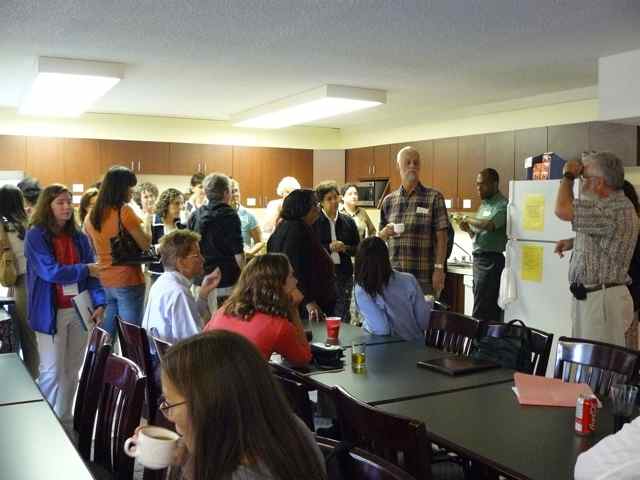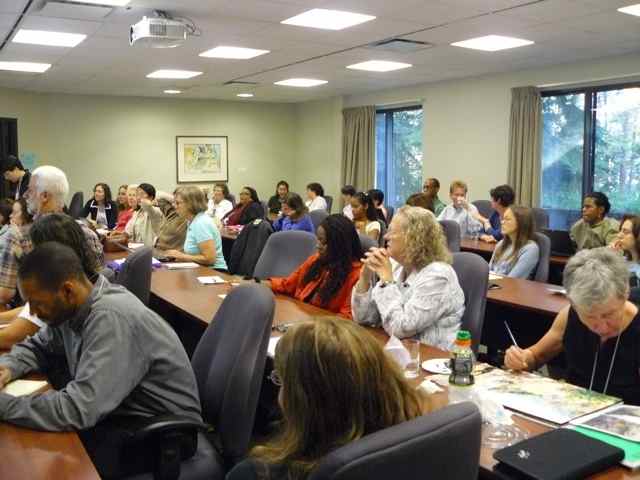


 |  |  | 1 Introduction |
The percentage of women holding academic positions in most branches of engineering and related fields in mathematics and science is far below their representation in the overall population. Often a department of 60-70 professors will have only one or two women, and there may be none in smaller departments. While the numbers and the environment have improved during the past century in some professions, such as biology and law, with a few exceptions engineering has remained well behind in the gender and ethnic diversity of its faculty and academic administration. The situation is even worse for underrepresented minorities. This lack of diversity means that the available pool for both academic and nonacademic jobs in high technology areas important to industry and government is significantly lower than it should and could be. The problem tends to propagate itself because the number of role models and mentors able to help new generations of students is limited. While increasingly government and academia have encouraged diversity, the results have, unfortunately, often amounted to little more than lip service with little demonstrable improvement in the actual numbers. There is also sometimes a backlash against efforts to increase diversity: search committees for engineering faculty might not buy into the goal of diversifying the pool, and female candidates who do make it to campus for an interview are met with suspicion -- the assumption is that the invitation is based on pressure rather than qualifications. A familiar litany of excuses has often been put forward to explain the failure of institutions to make genuine progress, including public statements by officials that reinforce the myths regarding the effects of gender and ethnicity on mathematical and technical abilities. Happily some institutions have made progress, and even small numbers of sympathetic faculty and administrators have made a notable impact on the recruiting, hiring, mentoring, and advancing of women and underrepresented minorities in engineering faculties; these few have in turn had an impact on the larger student population. The reasons and catalysts for such successful changes are not generally known and are often highly specific to the institutions and people involved. Furthermore, many of the problems have stubbornly resisted solution. However, the pooling of experience and ideas can contribute to their eventual resolution.
 |
During 22- 27 July 2007 a workshop was held at the Banff International Research Station (BIRS) in Alberta, Canada, to bring together students, faculty, and representatives of academic administration to collect, invent, discuss, develop, and document ideas on how individuals and groups within academic environments can effectively promote awareness and progress regarding mentoring underrepresented groups in their institutions in general, and among their students and colleagues in particular. The workshop was loosely modeled on the successful workshop "Mentoring for Engineering Academia," held in June 2004 at Stanford University with the support of a Presidential Award for Excellence in Science, Mathematics, and Engineering Mentoring (PAESMEM) -- a program sponsored by the White House and administered by the US National Science Foundation -- and the Stanford University School of Engineering. That workshop brought together 70 students, faculty, and administrators for presentations, panels, and discussions on mentoring graduate students and both junior and mid-career faculty and provided an enthusiastic and stimulating exchange of ideas. Proceedings were produced in both a Web format -- available along with the presentation slides at http://paesmem.stanford.edu/ -- and a paperback book, which was distributed to participants and more widely through the US NSF and by request (copies are available while they last from rmgray@stanford.edu).
The BIRS workshop was envisioned as a followup to the original PAESMEM/Stanford workshop and had an organizing committee with a strong overlap with the original workshop. However, the structure, specific topics treated, and location changed. Topics treated in the original workshop and revisited at BIRS included the following:
New topics considered at the BIRS workshop included
Each of these topics became the focus of a session at the workshop and forms a chapter in these proceedings.
The BIRS workshop shared the two primary goals of the earlier workshop:
The relevance and importance of this initiative are amply illustrated by the pressing national need for trained technical talent and the implicit need for enlarging the pool of trained, talented members of the profession. The issues will remain timely until the population in the engineering professions better reflects the population in general, as has happened in biology and law.
The primary objective of the workshop was the development and documentation of ideas on how to mentor students, colleagues, and academic administrators on issues relating to academic careers in engineering and related disciplines, with an emphasis on issues relavent to women faculty in electrical engineering and computer science. Many forms of mentoring were considered, including
 |
Most sessions began with brief presentations followed by discussion, a break, and more discussion. These proceedings represent a distillation of the presentations, the slides used by presenters, notes taken by scribes, and audio recordings of the sessions. The editors comprise the workshop organizers along with others who assumed responsibility for drafting the chapters for each topic. The proceedings were produced by iteratively revising the original draft using comments, corrections, and suggestions from the presenters and other participants.
Following the workshop, two student participants -- Lydia Contreras and Jamie Walls -- put together a survey as a means of gathering feedback from the participants in order to formally evaluate the impact of the workshop upon them. As part of their preparation of the survey, Lydia interviewed me as organizer, and we include that interview as a study on how the workshop was organized and run. The chapter provides interesting hindsight on the workshop itself that should be of interest both to the participants and to those considering organizing their own events.


 |  |  | 1 Introduction |